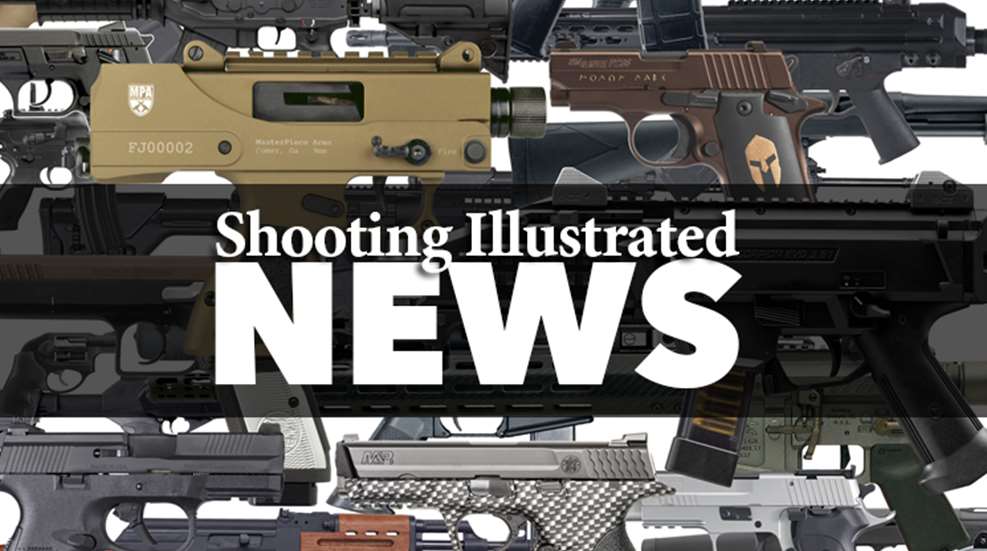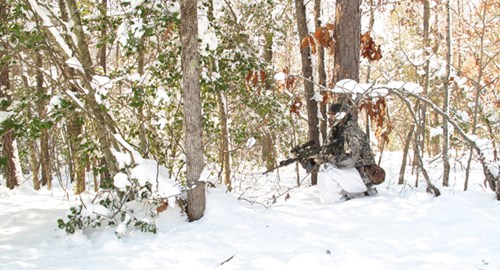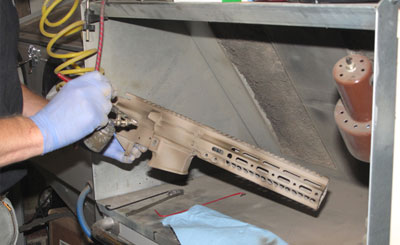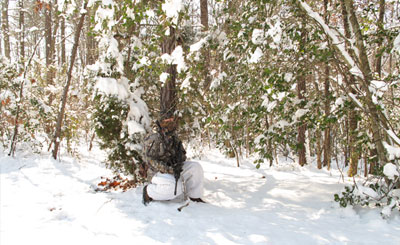
 Military snipers are taught the main "target indicators" that will get them noticed in any environment are unnatural movements, sounds, smells and poor camouflage. These same indicators cause the many "Busted!" moments that seem to frequent our hunting excursions each season. While good shooting skills and equipment are vital to hitting your intended point(s) of aim, avoiding these target indicators will get you into position to take those shots in the first place. Proper camo is probably the least understood skillset when it comes to remaining hidden in the field. It also happens to be an area that evolves rapidly with technology and lessons-learned. I routinely apply the lessons of proper camouflage from my own sniper/reconnaissance-heavy Army career to my hunting today.
Military snipers are taught the main "target indicators" that will get them noticed in any environment are unnatural movements, sounds, smells and poor camouflage. These same indicators cause the many "Busted!" moments that seem to frequent our hunting excursions each season. While good shooting skills and equipment are vital to hitting your intended point(s) of aim, avoiding these target indicators will get you into position to take those shots in the first place. Proper camo is probably the least understood skillset when it comes to remaining hidden in the field. It also happens to be an area that evolves rapidly with technology and lessons-learned. I routinely apply the lessons of proper camouflage from my own sniper/reconnaissance-heavy Army career to my hunting today.
Whether you are on the hoof or in a static position, the key to visually blending in with your surroundings is to break up your outline with colors, shading and shapes that appear natural. Use a backdrop such as a large tree trunk, rock or dense thicket whenever sitting in one position. Snipers sometimes use Ghillie suits to blend in, but these are not the ridiculously shaggy outfits commonly seen in movies and hunting catalogues. An effective Ghillie relies heavily on natural vegetation from the area being hunted, along with a few shredded burlap strips (jute) and a camouflage base material, such as an old set of camo coveralls or fatigues. Unfortunately, even simple Ghillies are bulky and tend to get tangled up in heavy vegetation. Walking to a treestand in one may prove more troublesome than it is worth. Commercial leafy wear-type products effectively bridge the gap between regular clothing and Ghillies. Being conservative with the amount of things hanging off of your clothing and gear is usually a safe bet.

Fortunately, camouflage clothing has come a long way since the days when Maj. Robert Rogers and his Rangers dyed their buckskins green during the French and Indian War. The best patterns use subtle, shadow-like effects and multiple natural color combinations. No one pattern works in all environments, so having different blends from which to choose helps. Striped patterns tend to work better in reeds and areas with dense, vertical undergrowth, while blotched and speckled patterns are more suitable for leafy or sparse areas that get sunlight.
Don't forget about your other equipment: every year I see hunters decked out from head to toe in good camo patterns while carrying semi-gloss stocked rifles and shotguns with lustrous blued barrels. Gun camo isn't new, but since many companies use a "one color fits all" approach, be prepared to break up the color scheme when you suddenly realize your flat dark earth rifle doesn't blend into an autumnal landscape. Here are a few tips for camouflaging yourself as well as guns and equipment:
Eliminate shiny surfaces and unnatural colors wherever possible.
- Break up a gun's long axis by painting or taping lines perpendicular to the barrel and stocks.
- Airbrush starter kits are cheap, but a few cans of earth-tone spray-paint will do the trick, too. Remove oils and grease from all surfaces you intend to paint. Plug your muzzle and close the action before applying the paint.
- When painting optics, tape around all joints and cover all lenses. Check to ensure you aren't voiding your scope's warranty by painting it.
- Camouflage tape is a temporary and changeable way to break up a gun's color and shape effectively.
- Use dark colors to dampen the high points (brass deflector, bolt handle, etc.) and light colors to brighten shadowed spots.
- Remember, unconcealed faces and hands stand out in the woods (ask a turkey hunter).
- Wear white on the lower body and vegetation colors on top when in the woods when there's snow on the ground.
- Don't confuse concealment with cover. The former hides you, while the latter protects you from incoming fire. Unless you hunt jihadist whitetail, concealment ought to be the main focus of your efforts to hide in plain sight.

We strive to ensure our shooting skills and tools are up to the task of making clean kills, but effective hunting involves more than just pulling the trigger. Hunting any quarry successfully depends on your ability to move stealthily into an area, observe and identify targets without being detected and then shoot well. Employ camouflage that is as close to your natural environment as possible while avoiding the other target indicators, and you will stand a much better chance of success.





































